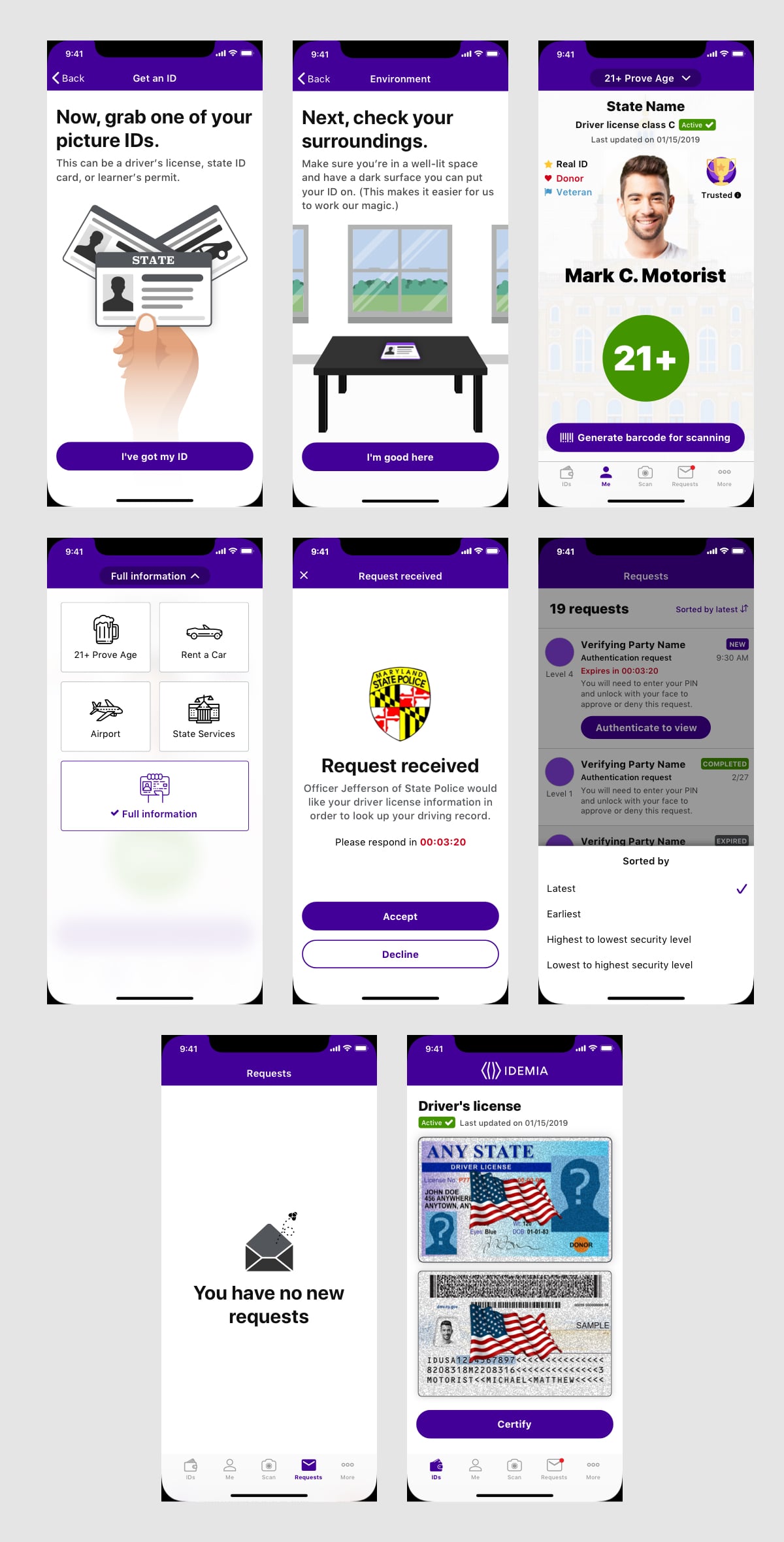
As a design lead at IDEMIA, I was responsible for one of the key products that they offered to customers, the Mobile ID application.
Digital identity has many challenges. There are ~330 million people in the U.S. In addition to driver's licenses, driver's permits, commercial driver's licenses, state ID cards, passports, and social security cards, a wave of digital versions of these forms of IDs is coming.
But fraud is a major problem. In 2018, there was ~$1.5 billion lost due to identity fraud in the U.S. alone. IDEMIA had a unique opportunity to help people digitally and physically authenticate themselves, thereby reducing the impact of fraud against consumer companies, government agencies, and individuals.
Additionally, a digital form of a government-issued ID is still a new concept for the general public. So how do we get people to adopt this new form of ID?

In order to build a product that resonated with U.S. residents, discovery and research was critical.
We worked closely with many state DMVs and their residents. We sent numerous surveys and conducted user interviews and usability testing in-person at state fairs.
I even went around Manhattan to find random strangers to test with (incentivizing with gift cards), and had a partner to capture notes.
The top concerns and considerations from users were of course: security, privacy of data, and how, why, and where would they use a digital form of their identification.


The Mobile ID application is a whitelabeled product that many state DMVs launched for their drivers and residents.
The goal with the app was to give residents a way to authenticate themselves daily, including: at a point of sale (like liquour stores), with police officers (digitally sending credentials without leaving their automobile), filing for welfare, and submitting tax documents to the state.
While it's in its infancy, the possibilities for a digital form of an ID are endless. While at IDEMIA, I was running monthly usability studies to validate and iterate on the features we were working on.
So what did we learn throughout this project?
- 1. People are very interested in the idea of having their drivers licenses on their phones, but are very skeptical about the security of it. That is a major focus area.
- 2. The use cases need to be very compelling. Users of these apps need more than a digital supplement to their physical IDs. What problem(s) does a digital ID solve that a physical one can't?
- 3. Authenticators (liquour stores, bartenders, bouncers, police officers, etc.) and the general public require a lot of hand-holding on this new form of ID.